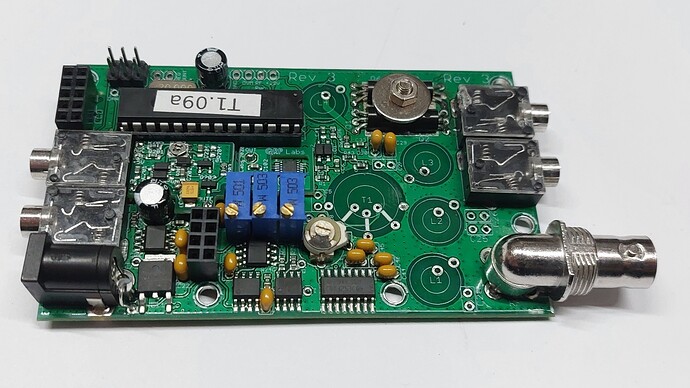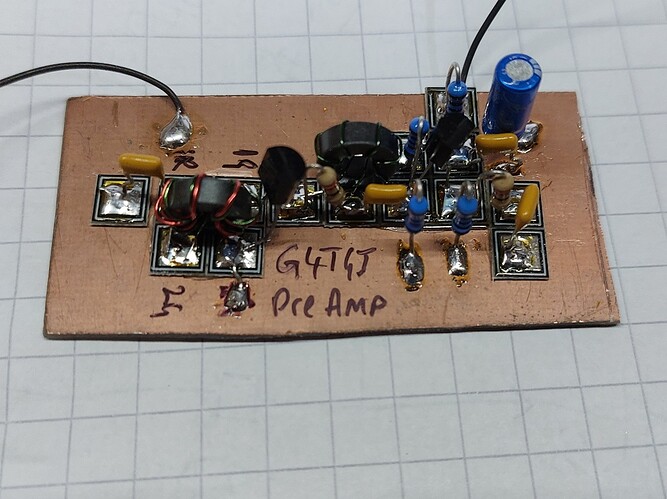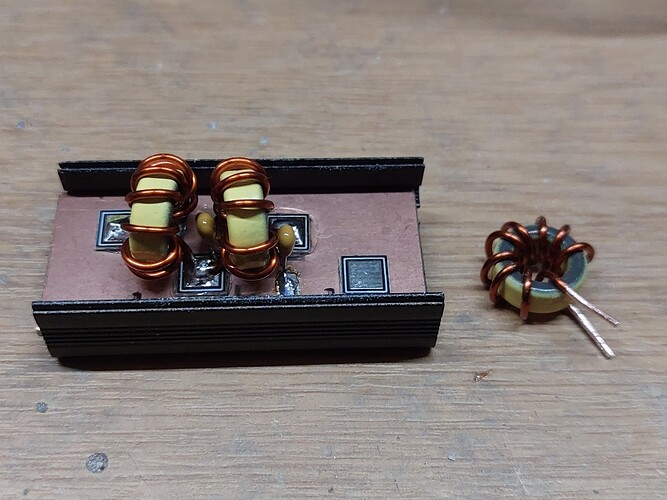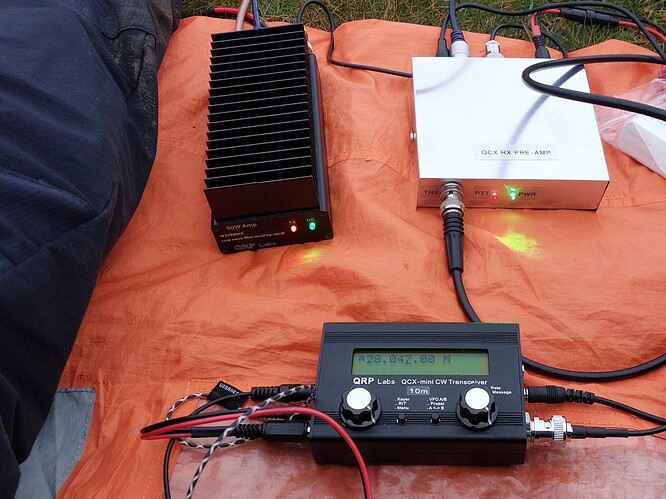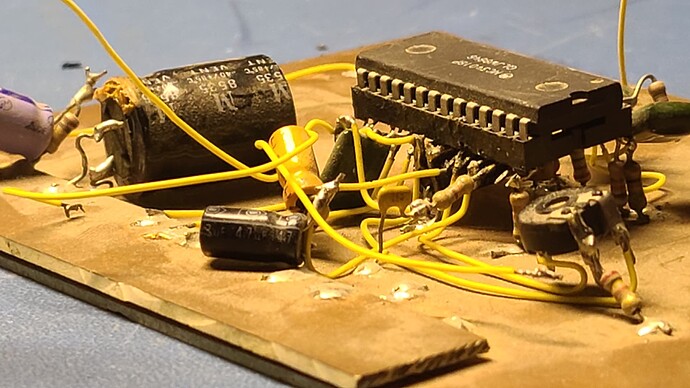Transatlantic QSOs are special to me, not sure why in particular, I just find the thought of communicating over such a vast distance quite magical.
With 10m coming in to play due to cycle 25, I took a guess that a lot of the transatlantic traffic would be on that band for the autumn S2S event.
Ideally I’d like a modern commercial HF rig with a good quality receiver but I don’t have the financial means to acquire something like that.
I wanted a bit more power than 5 watts, which is the max that I can squeeze out of my venerable FT-817. I set myself an arbitrary target of 25 watts, which is around 1 S point (6dB) difference over 5 watts. In my mind, anything under an S point increase isn’t worth the current.
I had a QRP Labs 50 watt QCX amplifier already, so all I needed was a QCX. I looked at used gear sites but came up with a blank. I didn’t want to spend a lot, my budget was rather restricted. Thanks to the SOTA reflector I was offered a used QCX-mini 20m for a fairly reasonable price.
I tested the QCX-mini 20 into a dummy load and confirmed it functioned before carefully removing the band determining parts. I was pleased to discover that the optional TCXO had been fitted.
I added the 10m components but I made a silly error, which I have made before! I’d reset the microprocessor in order to set the band to 10m, but, I forgot to change the reference oscillator setting to 25MHz instead of the default 27MHz. (The TCXO option uses a 25MHz oscillator in place of a standard 27MHz HC49S crystal.) I aligned the radio using a dummy load and thought all was OK. I glued the toroids with hot melt glue and then put the radio into the case. I plugged in my GPS to set the oscillator corrections and found some weird results, it was only then that I remembered about setting the reference oscillator value to 25MHz! Doh!
Aligned for the wrong frequency!
I changed the setting in the menu to 25MHz and then disassembled the radio before doing a realignment. I was able to get a bit more power on TX this time around and the turn spacing on the cores looked a bit better.
I tried the radio with a temporary dipole from home and made a few QSOs but the radio was rather insensitive, as I had anticipated. I’ve found that QCXs for 17m and above are lacking in RX RF gain.
I consulted with a few people and Richard G4TGJ shared a design for a simple pre-amp circuit. Ideally I wanted to make a pre-amp that would fit inside a QCX-mini but there isn’t much room and I didn’t have a lot of time. I made an ugly version of Richard’s circuit for testing and, with a 3ft piece of wire connected to the QCX-mini 10m one evening, I heard a PY station calling CQ. I weighed up my options and decided that I’ve have to go with an external pre-amplifier.
Ugly pre-amp
Rather than build another circuit, I just grafted the ugly circuit into a case that I had made previously but put in my scrap pile. I used a 12V relay to switch the pre-amplifier out during TX. I piggy backed the PTT signal from the QCX to trigger the pre-amp switching. I did a bodge job really as ideally the pre-amp should default to bypass and be held on RX when powered up, deafeated by the PTT signal. I couldn’t think of a simple solution, so I merely had the relay switch during TX. This bodge meant that the pre-amp (relay) had to be powered up and the PTT signal had to be present or else the QCX TX power would go straight into the RX pre-amp. I added a couple of indicator LEDs to the front panel of the pre-amp just for reassurance! ![]()
My QCX 50w amplifier has been ‘straight piped’, that is the low pass filter has been purposely omitted to allow use on multiple bands. I built a new low pass filter for 10m using T50-6 toroids. I happened to have a spare 1" sq by 2" case lying around.
It was hard to get power out of the amp on 28MHz but I found that driving the QCX-mini a little harder I could get to around 25-30 watts out. I used a 4S LiFePO4 battery to power the QCX-mini 10 to drive the amp a bit harder.
I tested the system during a sunny day on Hutton Roof Crags G/LD-052 and I worked transatlantic almost immediately!
I think a QMX might come along eventually and then I can put the pre-amp into retirement. Until the pre-amp is retired at least I’ll be able to use it with my other QCX radios.
The transatlantic S2S event was great fun and I think the QCX-mini worked better than I had hoped. The S2S QSO with @AA6XA in California was hard work but on the face of it pretty impressive with home constructed gear!
73, Colin
